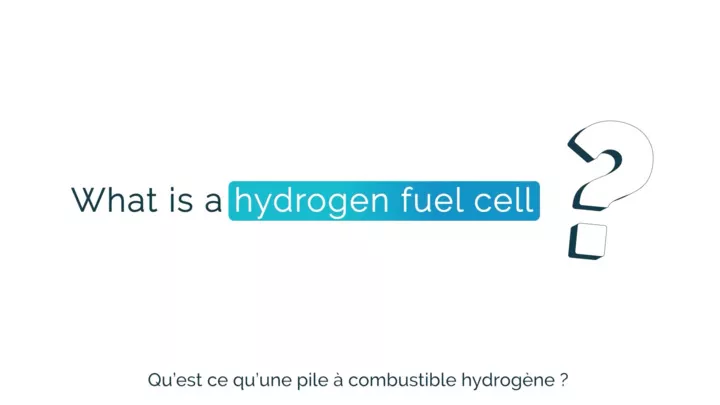Benefits of a PEM Fuel Cell stack: contribution to a Clean Future

In the race to reduce greenhouse gas emissions, hydrogen fuel cell technology has emerged as a promising solution. Fuel cells offer unique advantages that make them ideal for powering demanding on and off-road applications.
What is a PEM fuel cell stack?
PEM fuel cell stacks are electrochemical reactors that use hydrogen and oxygen to generate electricity. They are composed of electrochemical cells stacked one after the other. As for every conventional cell, the key elements are the anode and the cathode. In a hydrogen fuel cell, the two elements are sliced up by a proton exchange membrane. Hydrogen gas flows through one side of the cell, while oxygen flows through the other. The chemical reaction takes place at the heart of the cell and generates electricity, water and heat.
Hydrogen fuel cell stacks represent the core of the technology. They are generally enclosed in manifolds and a complete balance-of-plant enabling the system to be integrated into vehicles. The complete systems components vary from one supplier to another but are generally composed of cell monitoring, embedded control unit, humidifier, power converter, compressor, coolant pump and H2 loop.

Benefits of a PEM fuel cell stack
Benefit 1: Modular Technology
Depending on the application, hydrogen fuel cell systems are easily integrated into the engine bay, the trunk, and under the hood. More and more, systems have high compacity and power density. Fuel cell systems keep high buses' passenger capacity, trucks’ towing capacity, or payload of vehicles. Moreover, H2 fuel cell stacks are not impacted by extreme weather. They meet winter’s challenging operating conditions. These are all elements proving the advantages of fuel cell systems for mobility. Indeed, they are currently developed for cars, buses, trucks, but also for trains, boats, planes, forklifts, construction machinery and stationary applications.
Benefit 2: Zero Emission
Fuel Cells Electric vehicles (FCEVs) are zero-emission vehicles that combine the best of both worlds: the zero-emission and driving comfort of electric drivelines with the performance of combustion engines. During operation, hydrogen vehicles neither emit any noises, nor any harmful particles such as CO2 or NOx. The only byproducts are water, vapor and heat. Thus, hydrogen fuel cells play an important role in the decarbonization of on and off-road applications.
Benefit 3: Long-distance capacity
One of the fuel cell stack specifications is that it produces electricity onboard. The hydrogen stored in the tank is co-injected with air in the fuel cell and transformed into electricity. This technology significantly enhances the autonomy range of electric vehicles and equipment, bringing their performance closer to combustion engines. Fuel cells have proven their added value, especially on on-road applications. With one refuel, FCEVs range double compared to battery electric vehicles (BEVs). Indeed, for light commercial vehicles, we go from approximately 280km to 500km. For heavy trucks, the range is doubled going from 500km in BEV to 1,000 km in FCEV.
Benefit 4: Fast refueling time
Refueling with hydrogen takes the same time as with regular fuel, ranging from 2 to 10 minutes. On the other hand, the typical charging time for a BEV on a supercharger is from 30 to 45 minutes.
For buses, the gap is even bigger, as a full charge takes 2 to 4 hours depending on the charge power while one refill with hydrogen requires only 10 to 15 minutes.
Benefit 5: Scalable Technology
Fuel cell technology can be scaled to accommodate the power needs of various mobility applications, from cars to large trucks and buses. Beyond on-road mobility, fuel cells are also a promising technology for trains, boats, planes, forklifts, construction machinery and stationary applications.
The benefits of PEM fuel cell stacks are starting to be more apparent and to penetrate new sectors such as handling materials, and agriculture machinery. Fuel cells do not require the use of critical materials such as Lithium, Nickel, Graphite or Cobalt, making them a safe investment. Moreover, as the technology matures and production scales up, the cost is expected to decrease. Additionally, governments and private companies are investing heavily in developing a hydrogen infrastructure network, which will make hydrogen distribution and utilization more readily available.
PEM fuel cell stacks contribute to a better future
Fuel cell technology has the potential to transform the mobility sector and contribute to a cleaner future. With its high efficiency, fast refueling time, zero emissions, and scalability, FCEVs offer a competitive alternative to traditional internal combustion engines. As the technology continues to develop and costs come down, FCEVs are to become the disruptive solution for carbon-free mobility.
